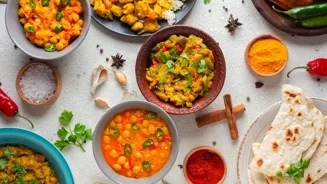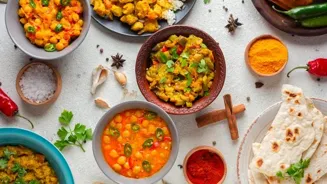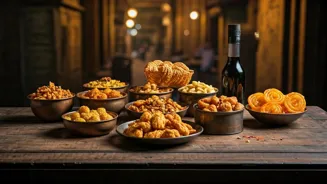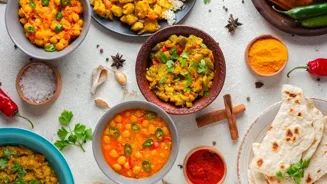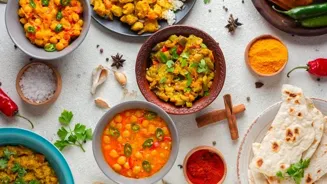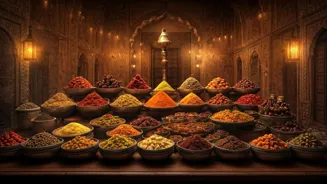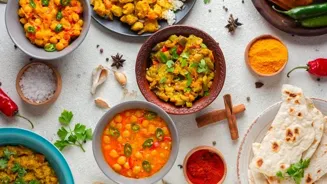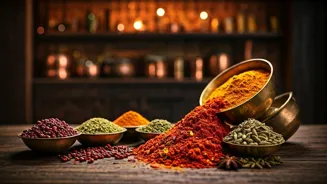Unraveling the History of Dal: A Journey Through India's Culinary Evolution. Delve into the roots of this staple dish
Dal. The very word conjures up images of steaming bowls of comforting goodness, a flavourful
accompaniment to roti or rice, and a cornerstone of Indian cuisine. Few dishes are as ubiquitous or beloved as dal, enjoyed across the length and breadth of the country in countless variations.
But have you ever stopped to wonder about the story behind this humble yet essential dish?
The history of dal is a fascinating journey that intertwines with the very fabric of Indian civilization, revealing insights into agricultural practices, culinary traditions, and the evolution of dietary habits.
It's a story of resilience, adaptation, and the enduring power of simple, wholesome ingredients. Let us take a look at the interesting evolution of this food.
Origins of dal in the Indus Valley Civilization
The origins of dal can be traced back to the Indus Valley Civilization, one of the world's oldest urban societies, which flourished in the Indian subcontinent from around 3300 to 1700 BCE.
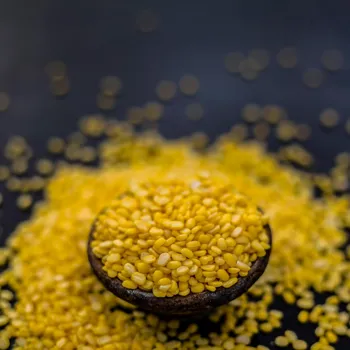
Archaeological evidence suggests that pulses, the seeds of leguminous plants that we commonly know as dal, were among the earliest crops cultivated in this region.
These early farmers recognized the value of pulses, not just as a source of food but also for their ability to enrich the soil through nitrogen fixation, a natural process that enhances soil fertility.
This made pulses an ideal crop for sustainable agriculture, ensuring food security for generations to come. Over time, different varieties of pulses were domesticated and cultivated, each with its unique characteristics and flavour profiles.
These included moong dal, urad dal, masoor dal, and chana dal, among others, laying the foundation for the diverse range of dals that we enjoy today.
The people of the Indus Valley Civilization incorporated these pulses into their daily diets, preparing them in various ways, likely including simple stews and porridge-like dishes.
These early preparations were the precursors to the complex and flavourful dal recipes that would later emerge in Indian cuisine.
Vedic period influenced culinary traditions with Ayurvedic principles
The Vedic period (1500-500 BCE) witnessed further development in agricultural practices and culinary techniques. The Vedic texts, ancient scriptures that provide insights into the life and culture of this period, mention the cultivation and consumption of pulses.

As society became more structured, so did culinary traditions. Different methods of cooking and flavouring dal emerged, with the use of spices and herbs becoming increasingly common.
Ayurvedic principles, which emphasize the importance of balance and harmony in diet, also began to influence the preparation of dal. Specific pulses were associated with different doshas (body types) and seasons, and recipes were tailored accordingly to promote health and well-being.
For instance, moong dal, known for its light and digestible nature, was often recommended for people with a pitta dosha, while urad dal, with its nourishing qualities, was considered beneficial during the winter months.
This integration of Ayurvedic principles into the preparation of dal reflects the holistic approach to food that is characteristic of Indian cuisine. The Vedic period laid the groundwork for the sophisticated culinary traditions that would later flourish under the Mauryan and Gupta empires.
India's culinary evolution during Mauryan and Gupta empires
During the Mauryan (322-185 BCE) and Gupta (320-550 CE) empires, India experienced a period of economic prosperity and cultural flourishing. This era saw significant advancements in agriculture, trade, and culinary arts.
The variety of pulses cultivated across the country expanded, and regional variations in dal preparations began to emerge.
The Mauryan empire, known for its efficient administration and infrastructure, facilitated the trade and distribution of agricultural products, including pulses, across its vast territories.
This led to greater availability and accessibility of different types of dal, contributing to the diversity of regional cuisines. The Gupta period, often referred to as the Golden Age of India, witnessed a refinement of culinary techniques and the development of complex flavour combinations.
The use of spices became more widespread, and new methods of cooking, such as tempering (tadka or chhonk), were introduced to enhance the flavour and aroma of dal.
This era also saw the emergence of vegetarianism as a significant dietary practice, further elevating the importance of dal as a primary source of protein for a large segment of the population.
The culinary traditions established during the Mauryan and Gupta empires paved the way for the development of the diverse and sophisticated regional cuisines of India that we know today.
Medieval period in India saw fusion of culinary traditions, enriching dal recipes
The medieval period (7th-18th centuries CE) in India was marked by the arrival of various foreign influences, including those from Central Asia and the Middle East. These interactions led to a fusion of culinary traditions, resulting in new and innovative dal preparations.
The Delhi Sultanate (1206-1526 CE) and the Mughal Empire (1526-1857 CE) brought with them their own culinary styles, which gradually blended with the existing Indian traditions.
Ingredients such as nuts, dried fruits, and cream were incorporated into dal recipes, adding richness and complexity to the dishes.
New cooking techniques, such as slow-cooking and dum pukht (a method of cooking over low heat in a sealed pot), were also adopted, further enhancing the flavour and texture of dal.
Regional variations in dal preparations continued to evolve, reflecting the local ingredients and culinary preferences of different regions. For instance, Awadhi cuisine, known for its refined and elaborate dishes, developed unique dal recipes that incorporated rich ingredients and aromatic spices.
Similarly, Hyderabadi cuisine, influenced by both Mughal and South Indian traditions, created its own signature dal dishes, such as dalcha, a flavourful combination of dal, vegetables, and tamarind.
The medieval period witnessed a significant cross-cultural exchange of culinary ideas, enriching the diversity and complexity of Indian cuisine, including the humble dal.
British colonial period influenced Indian dal consumption & variety
The colonial period (18th-20th centuries CE) brought about significant changes in Indian society, including its culinary landscape. While dal remained a staple in Indian diets, its preparation and consumption were also influenced by the British colonial presence.
The British, initially unfamiliar with Indian cuisine, gradually adapted to some of its flavours and incorporated them into their own recipes. However, their influence on dal was more indirect, primarily through the introduction of new agricultural practices and food processing techniques.
The British introduced new varieties of pulses from other parts of the world, such as lentils from Europe and beans from the Americas, further expanding the range of dals available in India. They also promoted the cultivation of pulses for export, leading to increased production and availability.
In addition, the British introduced new methods of food processing, such as milling and canning, which made it easier to store and transport pulses.
While the colonial period did not significantly alter the basic preparations of dal, it did contribute to the increased availability and accessibility of pulses, ensuring their continued role as a crucial part of the Indian diet.
Despite the challenges and disruptions of colonial rule, dal remained a constant source of nourishment and comfort for the people of India. The essence of Indian cooking did not stop here but evolved with time.
Dal: Versatile, nutritious Indian staple, evolving into superfood, celebrated in modern recipes
In contemporary India, dal continues to hold a central place in the daily diets of millions. It is a versatile dish that can be prepared in countless ways, reflecting the diverse culinary traditions of the country.
From the simple and comforting moong dal tadka to the rich and creamy dal makhani, there is a dal recipe to suit every taste and occasion. Dal is not only a delicious and satisfying dish but also a highly nutritious one.
It is an excellent source of protein, fibre, and essential vitamins and minerals, making it an important component of a balanced diet. In recent years, there has been a growing awareness of the health benefits of pulses, and dal has been increasingly recognized as a superfood.
As a result, dal is not only consumed as a traditional dish but is also being incorporated into modern and innovative recipes. Chefs and home cooks alike are experimenting with new ways to prepare dal, using it in salads, soups, and even desserts.
The history of dal is a testament to the enduring power of simple, wholesome ingredients and the rich culinary heritage of India.
From its humble beginnings in the Indus Valley Civilization to its current status as a global culinary phenomenon, dal has played a vital role in nourishing and sustaining generations of Indians.
As we continue to explore and celebrate the diverse flavours of Indian cuisine, let us not forget the fascinating story behind this humble yet extraordinary dish. Its one of the most wholesome foods to have.
